Weightlifting belts are more than accessories, they’re tools built for strength, safety, and performance. At Get Gripped, we explore the different types, from sturdy leather powerlifting belts to versatile nylon models, so you can choose the belt that meets your training needs, style preferences, and comfort requirements. Understand how each option supports your body to elevate your lifts with confidence.
Table of Contents
Key Takeaways
- Leather belts offer rigid support for heavy lifts
- Nylon belts are flexible and ideal for dynamic workouts
- Powerlifting style belts maximise intra-abdominal pressure
- Get Gripped guides you to a belt that fits your goals
Weight Lifting Belts: A Breakdown of the Different Types
Weightlifting belts are a common piece of equipment for both beginner and seasoned lifters. They provide support to the lower back and core, helping to prevent injuries while maximising lifting performance. But with so many different types of belts on the market, it can be challenging to figure out which one is right for you. Whether you’re into powerlifting, bodybuilding, or general strength training, the type of belt you choose can significantly affect your training experience. There are different types of lifting belts available, focusing on materials and designs such as leather, nylon, and powerlifting-specific belts.
1. Leather Lifting Belts
Leather lifting belts are among the most traditional and popular choices for weightlifters. They are known for their durability, support, and longevity. If you’re serious about lifting heavy weights, a leather belt can be a valuable investment.
Features:
- Material: As the name suggests, leather belts are made of high-quality leather. The material provides a stiff, rigid structure that offers maximum support for the lower back and core.
- Stability: Leather belts tend to be stiffer than other materials, which can help create intra-abdominal pressure when lifting. This pressure supports your spine and provides a solid foundation for heavy lifts like squats and deadlifts.
- Durability: Leather belts are incredibly durable and can last a lifetime if properly maintained. They are resistant to wear and tear, and with regular care, they retain their shape and support.
Pros:
- Offers excellent support for heavy lifting.
- Long-lasting and durable.
- Great for powerlifting and other heavy lifts.
Cons:
- It Can be stiff, especially when new, which might require a break-in period.
- Less flexible than other materials, making them less ideal for activities like Olympic weightlifting or CrossFit.
Best for:
- Athletes focused on heavy, compound movements such as squats, deadlifts, and overhead presses.
2. Nylon Lifting Belts
Nylon lifting belts are an excellent option for those who need flexibility and comfort in their training. Made from durable nylon webbing, these belts are often lighter and more breathable than leather counterparts, making them suitable for certain types of workouts.
Features:
- Material: Nylon belts are constructed using nylon webbing, often reinforced with additional stitching to provide strength and support. The material is lighter and more flexible than leather, making it more comfortable for some lifters.
- Adjustability: Most nylon belts come with a Velcro or quick-release closure, allowing for easy adjustment and a custom fit. This is particularly useful for athletes who need to adjust their belts during workouts or between sets.
- Breathability: Nylon is a breathable fabric, making it a good option for those who perform high-intensity workouts or are concerned about heat buildup during their lifts.
Pros:
- Lighter and more flexible than leather belts.
- Often more comfortable for dynamic movements and high-rep sets.
- Typically more affordable than leather belts.
Cons:
- Less durable than leather, especially under heavy loads.
- Provides less rigid support compared to leather, which may not be ideal for maximal lifts.
- Velcro closures can wear out over time.
Best for:
- CrossFit athletes.
- Those doing dynamic or high-repetition exercises.
- Beginners or lifters looking for a more comfortable, less rigid belt.
3. Powerlifting Belts
Powerlifting belts are designed specifically for lifters engaged in strength training and powerlifting (squat, bench press, and deadlift). These belts are typically thicker and wider than regular lifting belts, offering maximum support for the core and lower back.
Features:
- Width: Powerlifting belts are often 4 inches in width, and the most effective designs are typically uniform throughout the entire belt. This ensures consistent pressure across the torso during heavy lifts.
- Thickness: Powerlifting belts are thicker than most other belts, providing additional support for the spine. They range from 10mm to 13mm in thickness, with the thicker belts generally providing more support at the expense of flexibility.
- Material: Powerlifting belts are most commonly made from leather, but there are also options in reinforced synthetic materials. Leather powerlifting belts are preferred by many lifters for their durability and support.
Pros:
- Provides maximal support for the lower back and core during heavy lifts.
- Ensures intra-abdominal pressure is generated effectively, which stabilises the spine.
- Durable and long-lasting.
Cons:
- It can be quite stiff and uncomfortable for some people, especially during break-in periods.
- Bulky design may not be ideal for more dynamic movements.
Best for:
- Competitive powerlifters.
- Lifters who focus primarily on heavy lifting with compound movements.
- Athletes who need maximum support for maximal lifts.
4. Olympic Weightlifting Belts
Olympic weightlifting belts are designed for athletes who perform the Olympic lifts: the snatch and the clean and jerk. These belts are built for flexibility and comfort, allowing lifters to perform dynamic, explosive movements while still receiving adequate core support.
Features:
- Material: Olympic weightlifting belts are often made from softer, more flexible materials like leather or a combination of leather and synthetic materials. This provides the support needed without sacrificing mobility.
- Width: These belts are generally narrower than powerlifting belts, usually around 3 inches in width, so they don’t interfere with the range of motion required for overhead lifts.
- Flexibility: Olympic lifting belts are designed to be flexible, allowing for more natural movement during the snatch and clean and jerk. They also provide less rigid support than powerlifting belts, but still offer stability for the core.
Pros:
- Lighter and more flexible than powerlifting belts.
- Ideal for athletes performing Olympic lifts.
- Allows for greater freedom of movement, especially overhead.
Cons:
- Provides less rigid support compared to thicker, stiffer belts.
- May not be suitable for those performing heavy, low-rep squats and deadlifts.
Best for:
- Olympic weightlifters.
- Athletes focus on dynamic, explosive lifts.
- Those performing overhead movements require flexibility.
5. Velcro Lifting Belts
Velcro lifting belts are a hybrid between traditional lifting belts and adjustable straps. They typically consist of a flexible nylon or leather body and use a Velcro closure system to secure the belt tightly around the waist.
Features:
- Material: These belts are often made from lighter materials like nylon or leather, offering flexibility and comfort.
- Adjustability: The Velcro strap makes it easy to adjust the belt’s fit during a workout, and athletes can tighten or loosen the belt without needing to deal with buckles or prongs.
- Lightweight: Velcro belts are usually lighter and more breathable than traditional leather belts, making them suitable for high-rep exercises and cardio-focused training.
Pros:
- Easy to adjust and remove.
- Lightweight and comfortable for high-rep exercises.
- Great for beginners who may need to adjust their belt frequently.
Cons:
- Less durable than leather belts, especially under heavy lifting conditions.
- Velcro can wear out with frequent use.
Best for:
- Beginners or casual lifters.
- Those doing high-rep, dynamic lifts.
- Athletes are looking for quick adjustments between sets.
Conclusion
There is no one-size-fits-all belt. Get Gripped empowers you to choose the optimal belt based on training style, weight goals, and comfort. Whether you’re tackling heavy deadlifts or crushing cardio circuits, the right belt will support your form, protect your core, and empower your performance. Ready to find your fit? Visit our belts collection or get in touch with us to discover your ideal weight lifting belt and elevate your training.
FAQs:
Is a nylon belt okay for deadlifts?
Yes, nylon belts provide flexibility and are suitable for moderate deadlifts, but may not support maximal loads.
How should a lifting belt fit?
It should sit snugly around your core, covering your lower ribs and top of your hips, without restricting breathing.
Can a belt help reduce injury risk?
Yes, belts help increase intra-abdominal pressure and encourage proper spinal alignment, reducing core strain during heavy lifts.
Are wider belts better?
Wider belts distribute pressure evenly and offer more support, especially during big lifts, but may restrict mobility.
How do I care for my lifting belt?
For leather belts, wipe with a damp cloth and condition sparingly. Nylon belts can be spot cleaned. Always air-dry flat.

